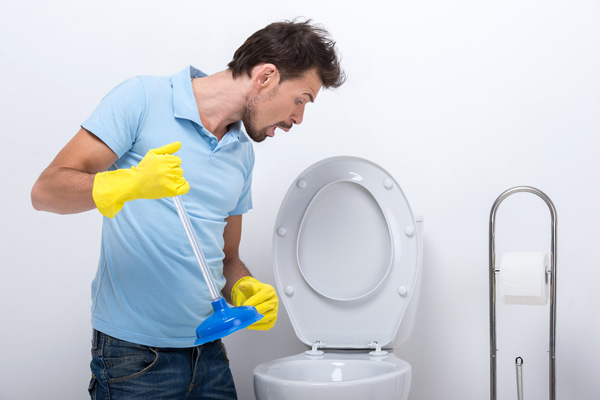Learn Plunger and Drain Cleaners Methods: Expert Guidance
Learn Plunger and Drain Cleaners Methods: Expert Guidance
Blog Article
Here underneath you can locate some sensible insight all about How to Unclog Your Sink with a Plunger.

Introduction
Proper upkeep of household drains is crucial for preventing obstructions and making sure smooth water flow. One of the secret devices in every homeowner's toolkit is the plunger, alongside various drainpipe cleansers created to take on persistent blockages efficiently. This short article checks out exactly how to make use of bettors and drain cleaners efficiently to keep your drains pipes moving easily.
Area 1: Understanding Plungers
Kinds of Plungers
There are several types of plungers offered, each made for different sorts of drains and clogs. The most usual kinds include mug plungers, flange bettors, and accordion plungers.
How Plungers Work
Plungers deal with the principle of developing stress and suction to displace clogs. When properly applied over a drainpipe, they create a vacuum that can take out particles or separate blockages.
Choosing the Right Plunger
Choosing the right plunger relies on the kind of drainpipe and the nature of the clog. Cup plungers are optimal for sinks and bathtubs, while flange plungers are much better fit for commodes due to their style.
Typical Mistakes with Plungers
Avoiding these blunders makes certain reliable plunging: inappropriate seal around the drainpipe, inadequate pressure, and not clearing bordering particles.
Area 2: Making Use Of Plungers Effectively
Preparation
Before plunging, make sure the bettor covers the drainpipe entirely and develops a limited seal. Clear any visible debris around the drain opening.
Technique
Beginning with gentle diving activities to construct suction. Increase pressure slowly, using a consistent rhythm. Repeat as essential till the drain gets rid of.
Fixing Tips
If diving does not function, try readjusting the seal, applying oil jelly for a better seal, or using a different kind of plunger.
Area 3: Recognizing Drain Cleaning Company
Kinds Of Drainpipe Cleansers
Drain cleaners can be chemical or enzymatic. Chemical cleansers use strong chemicals to liquify obstructions, while chemical cleaners use all-natural enzymes to break down raw material.
How Drainpipe Cleaners Work
Chemical cleansers react with blockages to liquify them, while chemical cleaners break down organic materials like hair and grease without harming pipelines.
Safety and security Factors to consider
Constantly put on handwear covers and eye security when utilizing chemical drain cleaners. Ensure adequate air flow and adhere to maker directions thoroughly.
Eco-Friendly Alternatives
Consider making use of vinegar and cooking soda or enzyme-based cleansers for green choices that are more secure for pipes and the environment.
Area 4: Utilizing Drain Cleaners Successfully
Application Techniques
Put chemical cleansers straight right into the drainpipe opening. Enable them to benefit the suggested time prior to purging with hot water. Chemical cleansers must sit overnight.
Precautions
Prevent blending different kinds of cleansers, as this can generate harmful fumes. Never make use of chemical cleansers in conjunction with a plunger, as splashing can happen.
Managing Persistent Obstructions
For relentless obstructions, take into consideration making use of a pipes serpent or calling an expert plumbing professional to stop damages to pipes.
Conclusion
In conclusion, recognizing just how to utilize plungers and drain cleansers efficiently is vital for maintaining healthy plumbing systems. By picking the right tools and techniques, home owners can deal with small blockages and prevent significant plumbing problems down the line.
How To Properly Use A Plumbing Snake To Clear Drains
When any drain clogs in our home arise, we tend to gravitate toward the plunger and little else. In cases where the plunger and its vacuum-created pressure are not able to clear clogs, many immediately move to harmful chemicals or simply call their plumber to fix the issue.
we’re happy to help with all drain cleaning needs and concerns. This includes informing you on a few other home remedies you may have at your disposal for minor to moderate clogs, one of which is the use of a plumbing snake. Many people have never used one of these before – let’s go over the steps to take when your drain clogs and you have a plumbing snake available.
Attempt Plunger Use
The first step here, as we noted above, should indeed be to grab your plunger when you notice a drain clog and attempt to resolve it this way. If you’re unsure how to use a particular type of plunger, our plumbers can answer any questions you have. If this doesn’t do the trick, however, you move on to the snake.
Locate And Prepare Snake
A plumbing snake is a metal or plastic device that’s generally about a quarter of an inch thick. It’s design with significant extensions, meant to reach down into your clogged drain and push the clog out. Snakes also contain drain augers that will latch onto and push stubborn blockages.
If your plunger doesn’t clear a clog, locate your snake and bring it to the drain in question. We also recommend keeping a bucket nearby to collect the clog once you pull it out, plus we’d advise wearing goggles and possibly protective gloves.
Feed Snake
Once you’re ready to go, feed the snake slowly down the drain, using the crank device it comes with to keep it moving until it finds the clog. Once this happens, much of the clog will be latched onto the coil so you can pull it out, while the rest will simply break up and flow downward.
Detach Debris
Remove the snake slowly from the drain, and once you’ve done so, pick off any debris that’s stuck to the coil. This is another area where wearing gloves is a must.
Flush Drain
Finally, take a few minutes to ensure the snake has done its job correctly. If you’ve been using it on a toilet, flush the toilet a couple times and make sure everything flows well. If you’ve used it on a different drain, flush it with some room temperature water.
https://www.mybuddytheplumber.com/blog/how-to-properly-use-a-plumbing-snake-to-clear-drains/

Application Techniques
Put chemical cleansers straight right into the drainpipe opening. Enable them to benefit the suggested time prior to purging with hot water. Chemical cleansers must sit overnight.
Precautions
Prevent blending different kinds of cleansers, as this can generate harmful fumes. Never make use of chemical cleansers in conjunction with a plunger, as splashing can happen.
Managing Persistent Obstructions
For relentless obstructions, take into consideration making use of a pipes serpent or calling an expert plumbing professional to stop damages to pipes.
Conclusion
In conclusion, recognizing just how to utilize plungers and drain cleansers efficiently is vital for maintaining healthy plumbing systems. By picking the right tools and techniques, home owners can deal with small blockages and prevent significant plumbing problems down the line.
How To Properly Use A Plumbing Snake To Clear Drains
When any drain clogs in our home arise, we tend to gravitate toward the plunger and little else. In cases where the plunger and its vacuum-created pressure are not able to clear clogs, many immediately move to harmful chemicals or simply call their plumber to fix the issue.
we’re happy to help with all drain cleaning needs and concerns. This includes informing you on a few other home remedies you may have at your disposal for minor to moderate clogs, one of which is the use of a plumbing snake. Many people have never used one of these before – let’s go over the steps to take when your drain clogs and you have a plumbing snake available.
Attempt Plunger Use
The first step here, as we noted above, should indeed be to grab your plunger when you notice a drain clog and attempt to resolve it this way. If you’re unsure how to use a particular type of plunger, our plumbers can answer any questions you have. If this doesn’t do the trick, however, you move on to the snake.
Locate And Prepare Snake
A plumbing snake is a metal or plastic device that’s generally about a quarter of an inch thick. It’s design with significant extensions, meant to reach down into your clogged drain and push the clog out. Snakes also contain drain augers that will latch onto and push stubborn blockages.
If your plunger doesn’t clear a clog, locate your snake and bring it to the drain in question. We also recommend keeping a bucket nearby to collect the clog once you pull it out, plus we’d advise wearing goggles and possibly protective gloves.
Feed Snake
Once you’re ready to go, feed the snake slowly down the drain, using the crank device it comes with to keep it moving until it finds the clog. Once this happens, much of the clog will be latched onto the coil so you can pull it out, while the rest will simply break up and flow downward.
Detach Debris
Remove the snake slowly from the drain, and once you’ve done so, pick off any debris that’s stuck to the coil. This is another area where wearing gloves is a must.
Flush Drain
Finally, take a few minutes to ensure the snake has done its job correctly. If you’ve been using it on a toilet, flush the toilet a couple times and make sure everything flows well. If you’ve used it on a different drain, flush it with some room temperature water.
https://www.mybuddytheplumber.com/blog/how-to-properly-use-a-plumbing-snake-to-clear-drains/

I was made aware of that editorial on through a pal on a different blog. Feel free to take the time to distribute this blog if you enjoyed reading it. Thanks so much for going through it.
Source Report this page